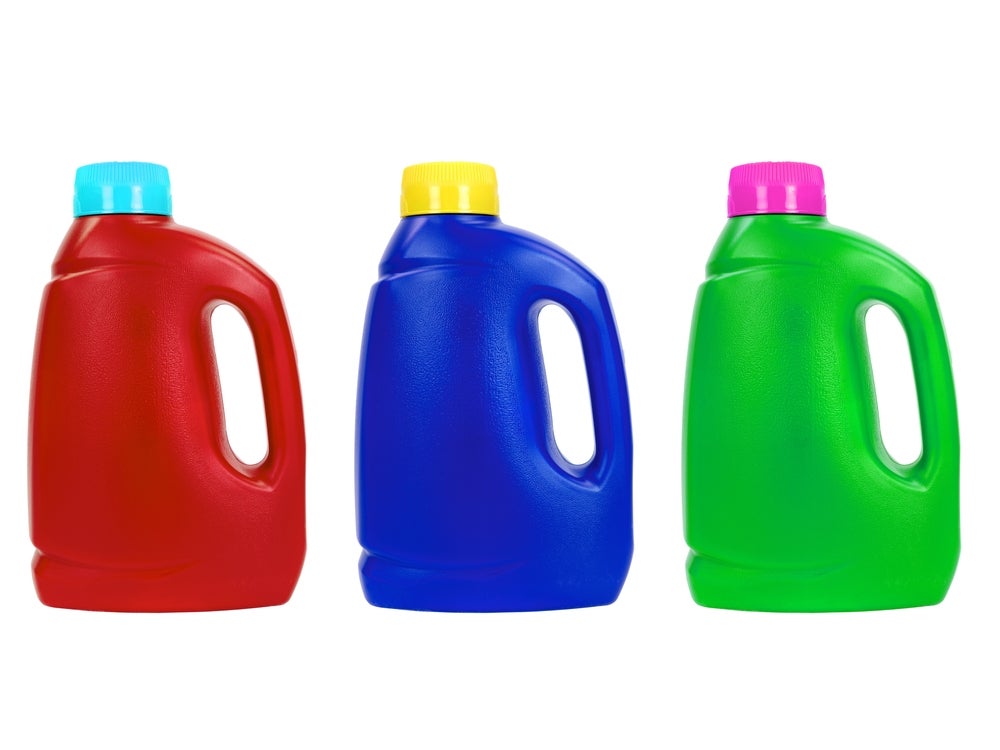Quick And Easy DIY Cleaners For Triathletes

Photo: <a href=http://shutterstock.com>Shutterstock.com</a>
Between eau de chlorine, funky insoles and questionable stains, triathletes are a notoriously funky bunch. Though many cleaning and deodorizing products are marketed to the endurance athlete crowd, they can sometimes be expensive and hard to find. In response, budget-conscious and handy triathletes have discovered quick and easy remedies using products already in the home. Triathlete.com compiled some of the best tips and tricks from readers and bloggers.
Treat Swim Damaged Hair
If tresses are damaged from time in the pool, reader Adriana swears by an unconventional tactic: “I rinse my hair with 50/50 mix of white vinegar and mineral water once a week.”
After rinsing the mixture out, shampoo and condition with your usual product. This routine removes chlorine buildup and returns hair to a soft, manageable state as well as eliminates the chemical odor.
RELATED – My Chemical Romance: Swim-Specific Shampoos
Sole Scrubbing
Experts say not to drop footwear in the washing machine, but sometimes it seems like the only way to take care of nasty smells. If the odor from bike shoes or race flats are starting to draw complaints from the neighbors, head to the kitchen.
Reader James turns to the spice cabinet: “A small cloth bag or sock full of salt (table salt is fine) placed in shoes when not in use will stop them becoming smelly.”
If you’re out of salt, or if you’re in need of some serious smell management, freeze the funk – literally. Apartment Therapy blogger Sarah Rae wraps trainers in a plastic bag, then places in her chest freezer for 24 hours. The low temperatures kill the organisms that cause odor, leaving your shoes stink-free.
Suds Your Shirts
If laundry detergents aggravate your skin or senses, consider making your own. Reader Matt shares the formula for the DIY laundry soap he uses for all things stinky, including his running gear and his 7-month-old baby’s diapers:
1 cup Dr. Bronner’s Castile Soap (I use the ultra-mild baby version)
1 cup Washing Soda (made by Arm & Hammer – think baking soda on steroids)
1 cup Borax (a laundry booster)
2 cups warm water
1/3 cup salt
White vinegar
Add all dry ingredients to a 1 gallon pitcher and then add water. Mix together slowly with whisk until all that can dissolve does dissolve. Slowly fill pitcher with water. Add Bronners. Stir mixture slowly until all that can dissolve does dissolve. Let sit overnight. Before you use it the first couple of times, take whisk and mix mixture together (it will be congealed). If necessary, add more water to lessen the supersaturation. Use 1/4 cup per load, and add white vinegar as desired to fabric softener cycle to get better rinse. (The vinegar reacts with any remaining soap and neutralizes it.)
RELATED – Clean Up Your Act: Taking Care Of Your Active Wear
Wetsuit Wash
Let’s be honest: whatever you’re doing in the water before the race (ahem) probably isn’t washed away during your swim. Cleaning and disinfecting your wetsuit after every swim will keep odors at bay as well as extend the life of the material.
Science writer and television host Mike Senese tested multiple home cleaners to clean and remove a mildew odor from his wetsuit. The winner? A combination of Listerine and white vinegar. Mix the two ingredients and soak for 60 minutes.
RELATED: What Is A Wetsuit Made Of?
Repair A Scratched Bike Frame
Bikes don’t typically stink, but that doesn’t mean they don’t deserve some TLC for stains and blemishes. If your bike sports some battle wounds from dropped chains, crashes or poor handling, the concern is more than just cosmetic. Moisture from weather, sweat and storage environments can reach the frame through paint scratches, compromising the integrity of the frame.
Though bike stores sometimes carry touch-up paint, Roger Levy of Freewheelers Bicycle Store & Repair Center in Rochester, NY suggests nail polish to fix chipped paint and scratches. It’s cheap, widely available, and comes in a variety of colors, making it easy to find a close match.
To repair scratches, thoroughly clean and dry the surface to be coated, and inspect the scratch to make sure the frame underneath isn’t damaged. Paint lightly with nail polish, allow to dry, and repeat. Top with clear nail polish to seal. Inspect and touch up as needed; Levy suggests doing this every time the bike is cleaned.
RELATED – Do-It-Yourself Bike Tune-Up: A 5-Step Checklist
Freshen Up Your Mats
Yoga mats get a lot of use in a triathlete’s household: to protect the flooring under a bike trainer, to practice transitions, for foam rolling and…yes, to do yoga. This multi-use piece of gear gets a lot of germs, meaning you’ll come face to face with dirt, sticky residue and weird odors the next time you downward dog.
Jennifer of Mind Body Green shares her all-natural yoga mat cleaner, which can be used after every workout:
1 cup distilled water
10-15 drops tea tree oil
6-10 drops eucalyptus oil (or lavender)
Vinegar or Witch-hazel, optional
Find an empty travel spray container (many stores have them for less than two dollars), combine ingredients in bottle, and shake. If you have time to let the mat dry, saturate the mat and let air dry; otherwise, spray a small amount on the surface of mat and wipe dry before rolling and transporting.
RELATED: Four Yoga Poses For Cyclists